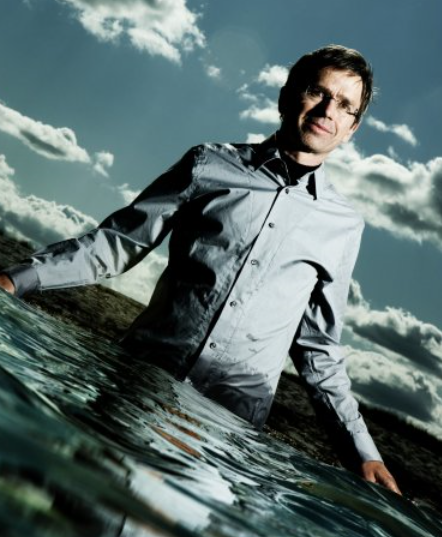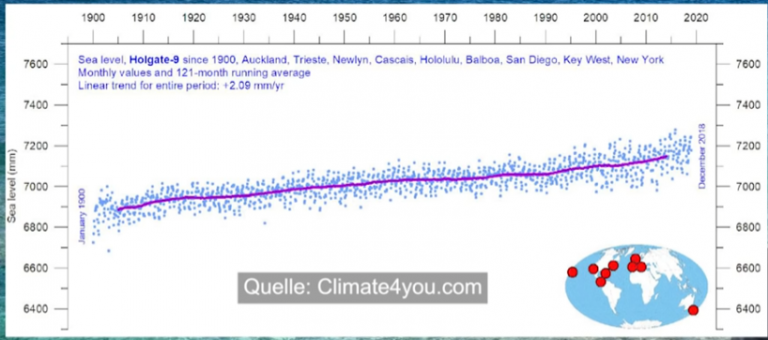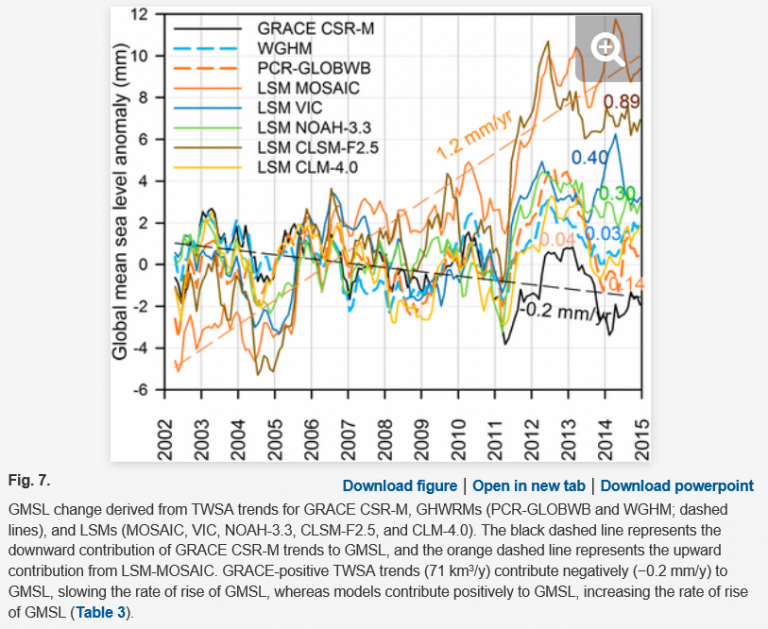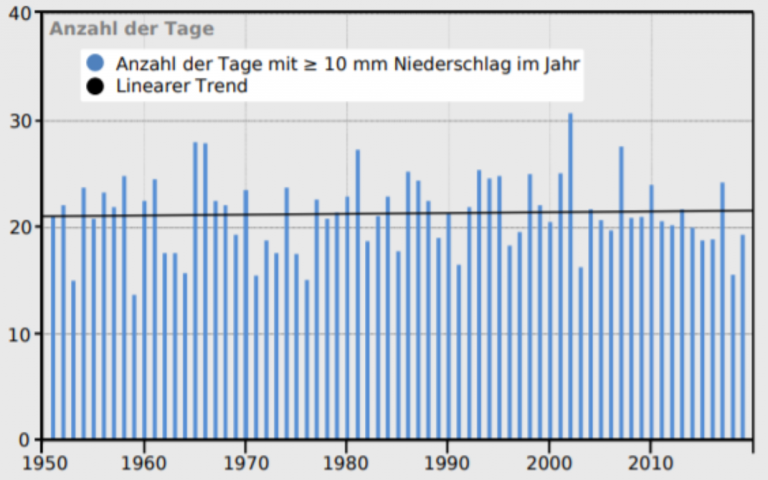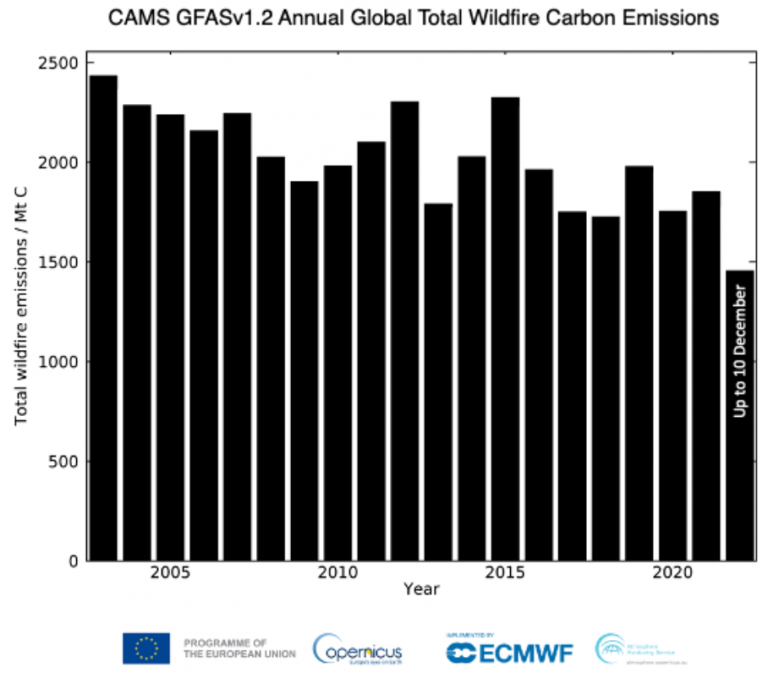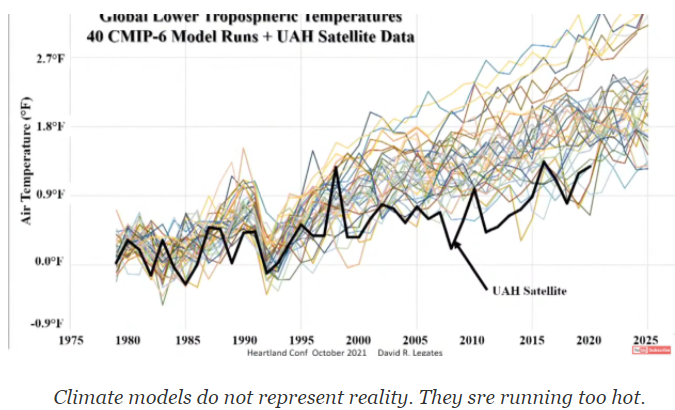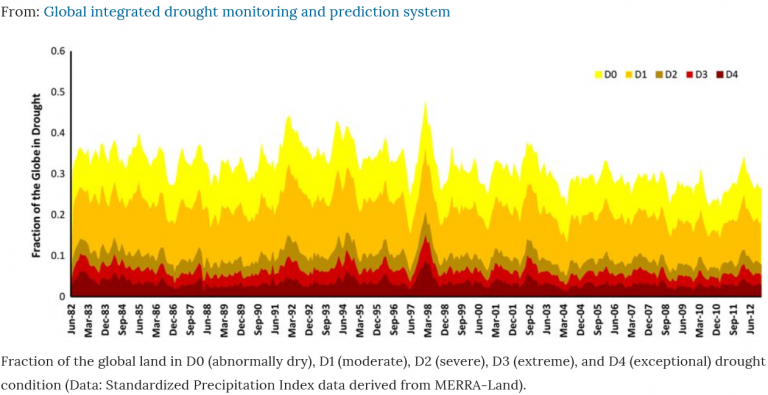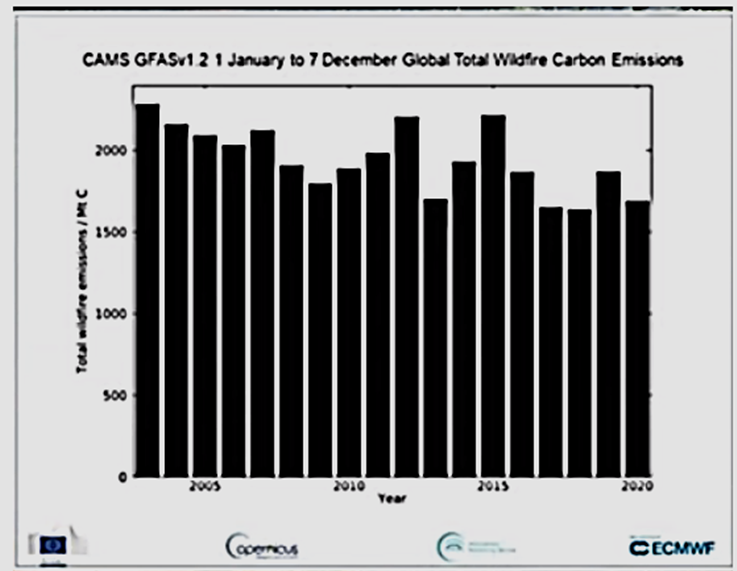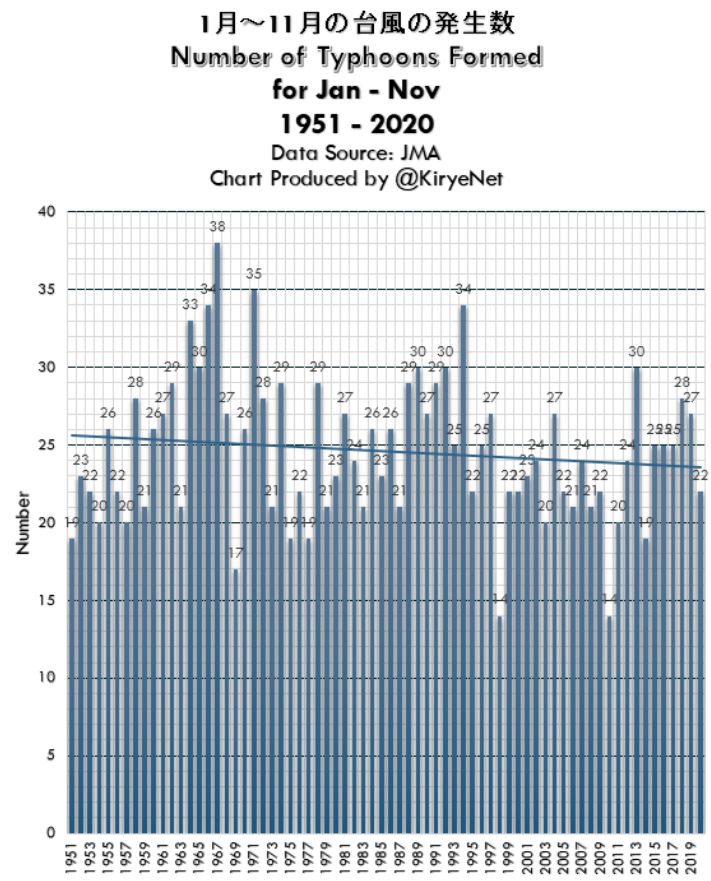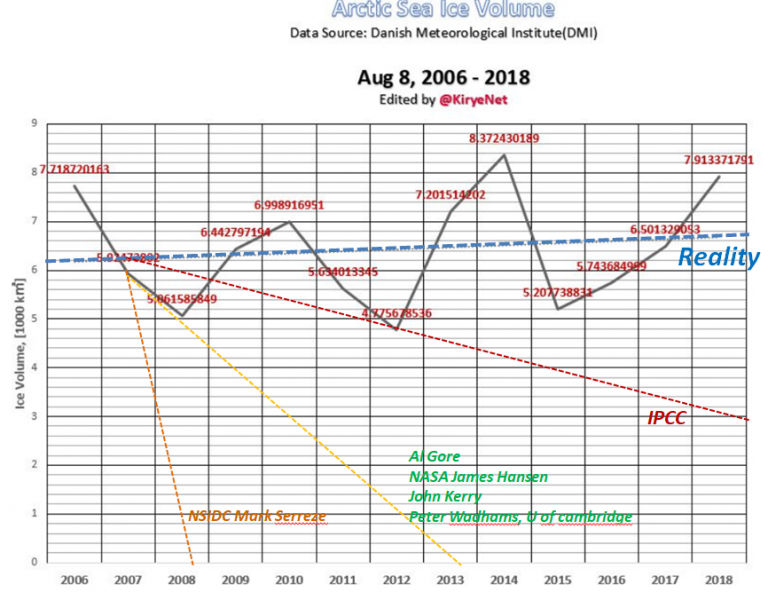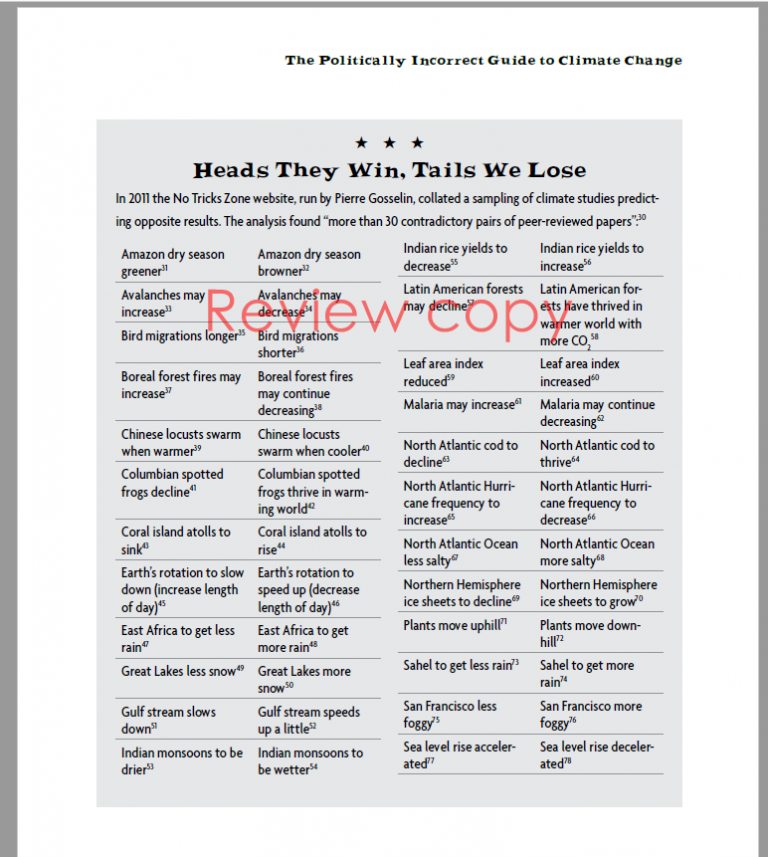Reblog. Biography of George Clarke Simpson. British Meterologist. Source. Royal Society. The source is an encrypted PDF. So I republished this because I wanted an electronic list of G.C. Simpson's pubications.
GEORGE CLARKE SIMPSON, 1878-1965

George Clarke Simpson was born at Derby on 2 September 1878, the second son and third of the seven children, three sons and four daughters, of Arthur and Alice Lambton Simpson. Arthur, born at Derby on 25 May 1851 and educated at Derby Grammar School, was the son of a Derby shopkeeper—of a small retail shop—and, until his marriage, helped in his father’s shop. Alice was the daughter of a well-to-do wharfinger, Thomas William Clarke, of Sutton Bridge, Lincolnshire, whose business was ruined through the silting up of the port. She was born on 25 March 1853 and died on 22 December 1937.
On marriage Arthur and Alice started a business of their own and slowly and laboriously built up a wholesale business, hardware, drapery and toys, one of the best in Derby at the end of the century. Arthur was an active church worker, a particularly successful teacher of young men in the Sunday School and, later in life, Councillor, Alderman and Mayor of Derby. He died on 27 June 1917. Arthur’s brother, George, was the father of David Capell Simpson, Oriel Professor of Interpretation of Holy Scripture, Oxford, 1925-1950.
In the early years of their marriage Simpson’s parents lived over their warehouse in Bag Lane, later East Street, in the centre of Derby and there Simpson was born. About twelve years later his parents bought a house in a better locality where the family lived the typical life of the Victorian middle class. It was a happy family and, as the business continued to grow, there was never any real shortage of moony; but there was no extravagance and certainly no waste.
Simpson married, on 23 September 1914 at St John’s Church, Sydney, New South Wales, Dorothy Jane, daughter of Cecil and Alice Stephen. Cecil Stephen, a barrister, was the son of Sir Alfred Stephen, P.C., G.C.M.G., Chief Justice (1844-1873) and Lieutenant-Governor (for three short periods between 1875 and 1891) of New South Wales, His ancestor James Stephen (1733-1779) was also the ancestor of Sir James Fitzjames Stephen, Bt., and Sir Leslie Stephen. Alice Stephen was the daughter of Sir Frederick Tooth, Bt.
George and Dorothy Simpson had three sons, Scott, Arthur Cecil and Oliver, and a daughter, Jean Veronica. Scott is Professor of Geology in the University of Exeter; Arthur, Officer in Charge, Fisheries Laboratory, Burnham-on-Crouch; Oliver, Superintendent, Basic Physics, National Physical Laboratory; and Jean a doctor of medicine.
At some time not later than 1887 Simpson entered the Diocesan School, Derby, a small school established to educate the sons of tradesmen and of the better class of artisan. There were about 60 boys and the single schoolroom was divided, after prayers, by curtains to separate the classes. What little was taught, it included French and physiography, was well taught, to the standard of the elementary grade certificate of the Department of Science and Art. Simpson did well; by the time he was fifteen he had got first classes in all the certificate examinations, except shorthand in which he confessed he was a total failure; he was top of the school. The Head Master, at a loss what to do with him, set him at a desk by himself, gave him a book on physiography and told him to prepare for the Advanced Physiography Certificate. This he did and obtained the certificate, the first advanced certificate won by the school.
At the end of 1894 he left school and entered his father’s business, ‘as a matter of course’. He began in his spare time to read popular science, was literally fascinated by Tyndall’s Light, found Stokes’s Optics needed a knowledge of mathematics beyond what he had learned at school and joined the evening class in trigonometry of a Mr Goudie to remedy the defect. His father, observing his interest in scientific reading, asked him if he was happy in the business or would like another kind of work. Although the possibility of leaving the business had never entered his head he immediately replied that he would like to go in for science. Anxious thought ensued, and enquiries of friends, ending with his father’s decision to send him to Owens College, Manchester, which, with University College, Liverpool, and Yorkshire College, Leeds, constituted Victoria University. This was early in 1897; his education had ended more than two years before and had not been up to the standard even to begin a university course. So in March 1897 he left the business and had six months’ private tuition by Mr Goudie before the beginning of the university year. It was considered that, in spite of the tuition, he would have no chance of passing the Preliminary Examination in September but that he should sit for it to gain experience; he could then enter college for an ordinary degree, though not for an honours course, and take the Preliminary at the end of his first year with the expectation of passing. In the event, to everyone’s surprise, he passed in September.
So in October 1897 he entered Dalton Hall with very little education and less culture; a marked provincial accent and practically total ignorance of art, literature and music, but with a sound moral background based on a happy home, much church going and years as a Sunday School teacher. In view of ‘the very little education’ he was advised that there was no hope of his taking an honours degree in physics in three years. Accordingly he registered for the ordinary degree with extra lectures and laboratory work in physics. But Providence intervened. A few days after the session had begun Professor Schuster saw Simpson working in the physics laboratory at a time when there was no ordinary class and went over to him. After a few minutes’ talk Schuster told him he was making a mistake in taking the ordinary degree, that he should go to the Registrar to get the course changed to Honours Physics and should do it at once as that was the last day on which courses could be changed.
Simpson did as he was told and so took the honours course. He was never in any doubt as to the significance of the change for his future. Without the honours degree, he was convinced he could never have done what he did. But he was painfully conscious throughout his life of his lack of the knowledge of mathematics and chemistry which a normal, instead of a compressed, course in science would have given him. In all his research work he had to get help or read up ad hoc whenever he needed mathematics or chemistry in solving a problem.
The honours course included a provision, due to Schuster, for the submission of a piece of research work as part of the final examination. The provision came into operation in Simpson’s year. His research was ‘to investigate the effects of temperature on the distribution of magnetism in an iron bar with special reference to a possible change in the direction of the magnetic axis’. The problem, suggested by Schuster as having a possible bearing on the variations of terrestrial magnetism, proved too big for one year’s work but an account of the work was submitted and Simpson got a first class honours degree. In the following autumn he accepted the post of Tutor in Physics at Dalton Hall, without salary, but with free board and lodging which, with a University Scholarship of £50, gave him financial independence; and time for research, on the resistance of bismuth to an alternating current in a strong magnetic field, the subject of two papers in the Philosophical Magazine. Shortly after the research began Schuster asked him if he would like to go to the Antarctic with Captain Scott who was then organizing his first expedition and wanted a physicist in it. Simpson jumped at the opportunity, was accepted by Scott subject to a medical examination ; this turned him down for a minor defect of which he had not been aware. He resumed his research but took an early opportunity to have a small operation which completely removed the defect.
In these two post-graduate years Simpson became active in the student life of the College which celebrated its Jubilee in 1901, with the opening of Whitworth Hall by the Prince of Wales and the introduction of academic dress for the undergraduates. He also became Secretary of the Manchester Committee formed to further the establishment of three separate universities in Leeds, Liverpool and Manchester in place of the single Victoria University.
In 1902 he was awarded an 1851 Exhibition. The holder was required to undertake a research at some university other than that of his training. On Schuster’s advice he chose Göttingen and in November 1902 began at the Geophysikalisches Institut, then under Wiechert, to attack the problem of the earth's permanent negative charge. At the end of his year’s work he was able to show that this charge could not be maintained by absorption of negative ions from the atmosphere as Elster and Geitel had suggested. This negative result was not very satisfying and Simpson thought that positive progress in this and other problems of atmospheric electricity might be made by observations in high latitudes where the long period of direct solar radiation in summer and its total absence for long periods in winter would enable the part played by solar radiation in the ionization of the atmosphere to be ascertained; also the effect of the aurora on the electrical state of the lower atmosphere could be investigated. He therefore obtained permission to undertake a year’s work on atmospheric electricity in Lapland. Two considerations governed his choice of place, (i) to have as long a period as possible with the sun continuously above the horizon in summer and below it in winter, (ii) to be well away from the coast, especially because Elster and Geitel had found radio-activity markedly lower on Juist, an island in the North Sea, than at inland places in Europe. On these grounds he chose the Lapp village Karasjok (Lat. 69° 17’ N, Long. 25° 35’ E 129 m above sea-level) about 100 miles south of Hammerfest and 150 miles east of Tromso. For a period of two months the sun was above the horizon in summer and below it in winter. Temperature in summer rose to 25 °C and fell to —40 °C or °F in winter. There, with a Benndorf electrometer, he obtained a continuous record of potential gradient from which he measured hourly values each day; with an Elster and Geitel instrument the dissipation was measured three times daily and the measurement had to be made with the instrument freely exposed in an open situation where it was in no way sheltered from the wind; with an Ebert apparatus the ionization was measured at the same time as the dissipation; the radio-activity was measured by the Elster and Geitel method using a wire 10 metres long stretched between insulators in the open air and charged to a negative potential of between 2000 and 2500 volts; each observation took over two hours and was made three times a day in alternate months, alternate weeks in summer, and an additional observation between 3 a.m. and 5 a.m. during one week out of four. It must have been a year of very hard work, daily from 7.30 a.m. to 7.30 p.m. and sometimes on nights of aurora to 9 or 10 p.m. The period covered was 28 September 1903 to 1 October 1904 at Karasjok followed by daily observations of radio-activity at Hammerfest from 17 October to 12 November 1904.
An account of the work with a summary and discussion of the observations was published in 1905 under the title ‘Atmospheric electricity in high latitudes’. There was a rich harvest, though, on the question of the effect of solar radiation on ionization Simpson hesitated to draw a definite conclusion. ionization rose during the two months with the sun continuously above the horizon, and fell in the opposite period, but the maximum and minimum came two months after the solstices. There was, naturally, practically no daily variation of ionization in these solstitial periods; and, in the intermediate seasons, spring and autumn, ionization was a little lower at mid-day than in the morning and lower still in the evening. The daily range was only about one-tenth of the annual range. As expected, dissipation varied with the strength of the wind; in winter the value with little or no wind was only a fifth of the value with a moderate wind of about ten miles per hour; there was a large annual variation, the value in summer being more than double that in winter.
The continuous records of potential gradient were summarized separately for the four seasons, winter being taken as November, December, January and the other seasons conformably. The outstanding features are the practical identity of the values for winter and spring, 180 and 177 V/m, and a similar near-identity in the curves of diurnal variation for these two seasons; also similar identities, at a lower level, for the two seasons summer and autumn whose mean values were 97 and 103 respectively. The parallelism of the curves is very striking and so is the contrast between the ranges in the two pairs of seasons—60 V/m in winter-spring and 20 V/m in summer-autumn.
Radioactivity in the atmosphere was then a new phenomenon; it had been discovered by Elster and Geitel only two years before. The few observations Simpson was able to fit in with his other work in the first two months gave values so much higher than any recorded up to that time that he decided he must make a planned series of observations. It was not easy, as each observation took two hours. Simpson did it and the results justified the effort. The mean value for the year at Karasjok, 60, was more than three times that in mid-Germany, 19, though less than that at Freiburg, 84. But while high values above 200 were frequent at Karasjok only one such value occurred in a year’s observations at Freiburg. The most important meteorological clement affecting the radio-activity proved to be the strength of the wind. In calm or light winds the mean value was 98, in moderate winds 47 and in high winds 33. Another result, supporting the theory that the radio-activity emanated from the ground, was the higher value, 85, with a falling barometer compared with 71 for a rising barometer. Even stronger support for the theory came from the observations at Hammerfest which gave a mean value 6 with wind from the sea and 72 with wind from the land.
A not unexpected difficulty in the measurements of ionization arose in winter through the freezing of the oil in the Ebert instrument at temperatures below —20 °C; in summer an unanticipated interruption was caused through mosquitoes being drawn in with the air; a net kept out the mosquitos but it also reduced the ionization, by an amount varying with the strength of the wind; two months’ observations had to be discarded.
In 1905 Schuster founded a small meteorological department in the University at Manchester with Simpson in charge, the first lecturer in meteorology in any British university. The department was also to have a station for the exploration of the upper air. The Prussian Meteorological Institute had established one in 1899 at Tegel near Berlin, equipped with kites, kite-balloon and personnel, with the aim, soon achieved, of getting each day temperature, humidity and wind at heights up to 5000 or 6000 ft. and, at intervals, by means of manned and free balloons, to heights occasionally exceeding 60 000 ft. for temperature but not for wind. It would have been quite impossible to obtain money for such an observatory in Britain; the efforts of the Joint Upper-air Committee of the British Association and the Royal Meteorological Society were directed to obtaining, with voluntary assistance and small grants, information from a network of stations about the distribution in space of temperature and humidity in the upper air at moderate heights. The Manchester University station, established by Simpson and continued by Petavel, was an important addition to the rather meagre network: Oxshott, Brighton and Petersfield. In this same year, 1905, the Meteorological Office was placed, as from 1 April, under the management of a Treasury Committee, with a Director appointed by the Treasury, in place of the Meteorological Council, nominated by and reporting to the President and Council of the Royal Society. Schuster, a member of the Council and then of the new Committee, arranged with the Council for Simpson to work, from | March, as volunteer assistant to the Secretary, Dr W. N. Shaw, who was to be, from 1 April, Director of the Office and Chairman of the new Committee. Shaw suggested to Simpson that he should investigate the relation between the Beaufort Scale of Wind Force and measured speeds of the wind. Shaw’s predecessor, R. H. Scott, had, in 1874, prepared a table of equivalents on the information then available. Eleven years later the Royal Meteorological Society included a re-examination of the relation among the questions to be investigated by a Wind Force Committee instituted in June 1885. This Committee found from experiments of W. H. Dines that the values of wind speed derived from standard Robinson cup anemometers were nearly forty per cent too high. With this information and largely increased data provided by the independent estimates of the Beaufort Number at stations with anemometers, R. H. Curtis in England in 1896 and W. Köppen in Germany in 1898 put forward new, but different, equivalents. The difference arose, at least in part, because Curtis’s equivalent of a number B was the arithmetic mean of all the velocities recorded on the occasions when number B was the estimate, while Köppen’s equivalent was derived by taking the arithmetic mean of all the B’s estimated when the velocity had a value V and obtaining by interpolation the value of V for each whole number B. The great variation in the frequency of occurrence of different speeds leads to appreciable errors in equivalents obtained by the Curtis method. The more frequent speeds are in fact over-weighted; each Beaufort Number covers a range of speeds. At the lower speeds the frequency increases rapidly with the speed so that the higher speeds in this range are over-weighted and the arithmetic mean is too high. At higher speeds than average the frequency decreases with the speed and the arithmetic mean is too low. Simpson went very fully into the question and arrived at equivalents which fitted very closely the relation V = 1.87 B3/2 where V is in miles per hour. The original specification of B by Admiral Beaufort depended on the effect of the wind on the working of a sailing-ship, and would naturally be expected to make B a function of the pressure of the wind. In fact, as the relation shows B is proportional to the cube root of the pressure. After completing the investigation of the equivalents, Simpson went on, in consultation with Dr Shaw, R. G. K. Lempfert and Campbell Hepworth, to prepare instructions for estimating the Beaufort Number of the wind on land from its effects on trees, buildings, dust and persons, and instructions for use on fishing smacks, complementary to those of Admiral Beaufort for sailing ships. It does not seem to have been realized at the time that the direct method of Curtis would have given equivalents free from the error due to frequency if the arithmetic mean had been taken of the single values of the speed recorded on occasions of number B, i.e. if speed V1 occurred n times, V2 m times, etc., the mean would be taken of V1 V2, etc., and not of nV1 mV2, etc. Simpson’s published report was prefaced by a characteristic illuminating introduction by Dr Shaw.
Although the result of Simpson’s investigation seamed conclusive enough, different sets of equivalents were used in some countries, notably by the Deutsche Seewarte, and in 1921 the International Meteorological Committee asked Simpson's help in reconciling the differences and in getting a scale which would be acceptable generally. He accepted the task, found that the differences were largely due to differences in the exposure of the anemometers, the outstanding importance of which had been emphasized by W. H. Dines in 1887; ‘the top of a building seems to be about the worst possible position’ and the anemometers used by the Scewarte were cither above the roofs of buildings or at a much lower height above ground than those used by Simpson in 1905. He therefore recommended a scale with the 1905 equivalents adjusted to be applicable to the speeds from an anemometer freely exposed at a height of 6 metres above ground in an open situation. This was accepted by the Committee in 1926, the scale to be appropriately adjusted for exposures differing appreciably from the standard.
In 1906 Simpson accepted an appointment in the Indian Meteorological Office, then under the direction of G. T. Walker, who had already recruited two ‘Imperial Meteorologists’, J. Patterson, later Director of the Canadian Meteorological Service and J. H. Field, who later succeeded Walker. Simpson completed the trinity. He took up his new duties at Simla in November and almost immediately initiated an investigation of the electricity of rain, plentiful at Simla, where other conditions were not very favourable for research in atmospheric electricity; no level spaces for outdoor observations, sparse laboratory facilities, neither gas nor electricity, indeed not even water laid on. Moreover, the inspection of meteorological stations in all parts of India and Burma involved long absences from Simla though it provided experience of the diversity of climate and taught him much about the people of India and its political problems. But the problem exercising his mind then and indeed for the next thirty years was the generation and distribution of the electricity of thunderstorms. The first step was to ascertain the charge on rain. To do this he let the rain, falling through a cylinder in the roof of a corrugated iron hut, drop into a large well-insulated galvanized iron vessel connected to a Benndorf electrometer which recorded the potential of the vessel every two minutes, the vessel being earthed automatically at the beginning of each two-minute interval. The rain leaving the vessel in the same two minutes was also recorded automatically. The walls of the hut were carried to a height of about two metres above the roof, to protect the cylinder from the earth’s electric field and from the wind; rain from the sides of the cylinder was drained away and did not enter the receiving vessel. A second Benndorf electrometer recorded the potential gradient, not the actual value because during a thunderstorm this changes too rapidly and too greatly for the instrument to follow the changes; a simple modification made it record only the predominant sign during the two-minute interval. With this installation he measured the charge on rain which fell in 1926 two-minute intervals during a period of about five months from April to September 1908. The charge was positive about 2.4 times as often as it was negative and the total positive charge was 2.9 times the total negative charge; the greater the charge the more frequently was it positive. With rain falling at a rate greater than 30 mm/h the charge was never negative; and, in fact, negative electricity was brought down by light rain proportionately much more frequently than positive. Another result was that the proportion of negative electricity was greater in the second than in the first part of a storm; on one occasion the negative charge was so great that the electric force would have been great enough to carry the drops upward against gravity if the potential gradient had been half that necessary for a lightning discharge ; actually, as C. T. R. Wilson has pointed out, an unlikely event since the large potential gradient is maintained by the fall of the drops. The record of potential gradient from the Benndorf electrometer showed that the gradient was more often negative than positive during rain but the sign of the charge bore no relation to the sign of the gradient.
Simultaneously with this investigation of the charge on rain, Simpson carried out a laboratory research to see if any electrical separation arose from the mixing of masses of air of different temperatures and humidities or from the freezing or thawing of water, but with negative results. He then tried breaking large water drops into spray by an air jet. At first, using water from the mains, there was no electrical effect but when distilled water was used the spray acquired a considerable positive charge. This was a momentous discovery, for Lenard had concluded that, though drops splashing on a flat plate produced an electrical effect, drops breaking up in the air did not.
A third result due to Lenard, essential for the application of the results of these two investigations to the explanation of the development of the electricity of thunderstorms, was that large drops of water falling through air break up into smaller drops if the large drops have a diameter of 5.5 mm or more.
With this knowledge Simpson calculated first the number of drops of limiting size at the top of a column 2000 m high and 1 cm² cross-section, at the end of 10 min, if the air at the bottom was saturated, had a temperature 15 °C, rose at a speed of 8 m/s and all the condensed water at the top was in the form of limiting size drops. The number was 36. He then calculated the number of drops per cm? whose breaking up would produce a potential gradient 30 000 V/cm, the value necessary for a lightning discharge. The number was 1600. The difference is large but Simpson pointed out that in the violent ascending currents drops could be broken up and recombine many times since the small drops are charged and consequently combine readily. On this account he felt justified in claiming that the breaking up of drops produced enough separation of electricity to cause lightning discharge. There was in fact no doubt about the reality of the separation; the doubt was about its magnitude and about the possibility of the drops breaking up and recombining 50 or 100 times and each such repetitive drop producing the same electric field as 50 or 100 separate drops. Against these doubts, dependent on calculations which may themselves be in error, can be set with more confidence the observed facts, consistent with the theory, that in storm after storm negatively charged rain fell in the lulls after a heavy downpour of positively charged rain. On the whole the theory seemed not only attractive but convincing and it held the field for about ten years. Then investigations both observational and theoretical, notably by C. T. R. Wilson in England and by Schonland and Craib in South Africa, appeared to necessitate thunder-clouds of positive polarity instead of the negative polarity of Simpson’s theory. Simpson restated his theory with more detail and illustrations of the Now of the air, the fall of the rain and the distribution of the electric charge in a typical thunder-cloud. He also calculated the electric field due to a simplified model distribution representative of the illustrated distribution of the electric charge. He claimed that the results were in accord both with his observations at Simla and with the observations of Wilson, Schonland and Craib, and of Appleton, Watson-Watt and Herd. He also made a new calculation of the number of breaking drops required for producing the electric field of a Simla thunderstorm and found that it would suffice if each drop broke ten times, a frequency which there was no reason to believe could not be reached with quite moderate ascending currents. Nevertheless he had some lingering doubts; the observational evidence was almost wholly of conditions outside the cloud. Seven years later he and F. J. Scrase designed an instrument which could be carried by a balloon up through a thunder-cloud, recording the sign of the potential gradient as it ascended. A series of records in thunder-clouds over Kew Observatory was obtained in the years 1934-1939. They showed (i) a negative charge in the middle levels of the thunder-clouds, both below and above the level of the ice-point temperature, (ii) in every cloud a positive charge above the negative charge at levels where, in most cases, the temperature is below -10°C; (iii) evidence that in most, if not in all, thunderstorms there are regions of positive charge below the negative charge, usually at levels where the temperature is above the ice-point and at places of heavy rain, and therefore probably due to the breaking of raindrops in ascending currents. The most probable cause of the upper positive charge is the collision of ice crystals which gives the ice a negative and the air a positive charge; the crystals fall and the charges are separated. Thus the middle levels are fed with negative charge from above by these ice crystals and from below by the ascending currents in the core of the thunderstorm. A recent investigation by J. B. Matthews and B. J. Mason revealed that breaking drops in strong eclectic fields of 300 and 1500 V/cm, such as may exist inside a thunder-cloud, produce charges 70 and 240 times as large as the charge found by Simpson in the absence of an electric field. Hence the field strength necessary for a lightning discharge can be produced by the breaking drops without frequent recombination and_ successive breaking.
In 1909 Captain Scott again invited Simpson to go with him to the Antarctic, starting the following year. This time there was no difficulty. India released him; he came to England and collected apparatus, towards the cost of which the people of Derby had subscribed a ‘Derby Fund’ of £500. He sailed in the Terra Nova, leaving England in June 1910 and arriving at McMurdo Sound on 4 January 1911. He was meteorologist and C. S. Wright was physicist but they worked together and shared the observations and when Simpson had to return to India, owing to the illness of Dr Walker, Wright took charge of the meteorologist’s work. During the voyage out, on the whole a rough one, he and Wright made observations of ionization and radio-activity and round the clock observations of potential gradient. The latter gave for the first time the diurnal variation of the gradient at sea, the phase of which is independent of longitude although this was not recognized at the time.
During the fourteen months before his unexpected return in the Terra Nova in March 1912 Simpson was fully occupied making meteorological observations and looking after the recording instruments at the base station at Cape Evans the results of which he was to work up, for publication, in his spare time in the years 1912-1918. They were published in three volumes, the first two in Calcutta in 1919 and the third in London in 1923. The magnetic records from instruments, installed in a cave dug in the ice and completed in a week in January 1911, and under Simpson’s charge until March 1912, were worked up for publication under Dr Chree’s direction and published, with his discussion of them, in London in 1921.
The meteorological equipment included balloons and instruments for obtaining the temperature in the upper air. To the instrument was attached a mile-long length of very light silk thread, so that, when it fell, the thread could be followed from the launching site and the instrument could be recovered. In the early ascents, the silk thread broke inexplicably and failed in its purpose, but the cause was discovered and a method devised for preventing it.
The ascents could be made only in relatively calm weather so that the records gave information only for calm weather conditions. In winter the temperature rose at first from the surface up to a height of 1000 m. It then began to fall and continued to do so up to 2500 m. In summer it fell steadily, at the rate of about 6°C per 1000 m, from the surface up to the greatest height reached.
The full account by Simpson of this and all the meteorological and magnetic work in the first volume, Discussion, is of absorbing interest.
Before Simpson left England for the Antarctic Dr Shaw mentioned to him that an important question on which observations there might throw some light was that of the lowest temperature at which supercooled water drops occur in the atmosphere. With this in mind he mace a note on one occasion of a fog bow when the temperature was —29 °C and as the fog dissipated, the sun shining over the top of a heavy bank of fog had a brilliant corona with bright colours and of unusually large diameter. The existence of the fog bow was conclusive evidence that the fog was one of supercooled water drops; the corona, according to the then current theory, could have been formed by a cloud of ice needles. Other observations had Iced him to doubt whether ice crystals could produce diffraction effects. He found that ice needles could do so but as they would float with their axes preponderantly horizontal they could not form the symmetrical corona observed. He set out his case in a paper published in 1912 which included also a note giving reasons for concluding that iridescent clouds must also consist of water drops though they are usually of cirrus type and therefore of a temperature well below the ice point.
After his return to India in 1912 he was too fully occupied with administrative work and Antarctic records to do research. In 1915 he was Acting Director-General of Observatories for eight months during Dr Walker’s absence in England and in 1916 he was with the British Expeditionary Force in Mesopotamia for two months advising on some meteorological problems. In 1917 he was seconded to the Indian Munitions Board, not returning to the Meteorological Department until April 1919. During his work on the Antarctic records of pressure he was led to examine the semi-diurnal variation not only there but in other parts of the world. In middle and low latitudes the phase of this wave is nearly constant for places near sea level, when time is measured from local midnight. The maxima of pressure in this wave occur a little before 10 a.m. and 10 p.m. In polar regions, as first discovered by Greely in 1888 from observations in the Arctic up to latitude 80°, the maxima occur at nearly the same Greenwich time whatever the longitude. Simpson, using data from 15 stations north of 70° N and spread over 280° of longitude, found that the local times of maxima ranged over the 24 hours of the day while the Greenwich times were within about an hour of midnight and noon. Schmidt had suggested in 1890 that the anomaly might be explained as due to two waves, one with amplitude decreasing from equator to pole, travelling from east to west and the other from pole to pole. A discussion on this basis had been published in 1909, with values for the amplitudes of the two waves from 45°N to the pole. Simpson adopted the hypothesis of a wave from equator to pole with a node at latitude 35° 16’. Taking Jaerisch’s formula for the amplitude of the variation treated as a single wave, 1.312 cos³L where L is latitude, he made the change necessary to allow for the contribution of the equator-pole wave and arrived at 1.249 cos³L sin(2t + 154°) as the representation of the east-west wave. For the amplitude of the equator-pole wave he took the formula k(sin²L —⅓) and derived the value of k, 0.183, from the observed amplitudes at stations between 50°N and the pole; the phase he found to be constant in latitude 40° to 80°. He adopted this value, 105°, giving for this wave 0.183(sin²L — ⅓) sin(2t + 105° — 2l) where l is longitude, t is local time (1 hour = 15°) and the values are in millibars, and refer to sea level. The mean values of the differences between the observed amplitudes and phases and the values derived from the formulae, for the combined variation for 216 stations, was 0.024 mb. and 4° respectively.
Early in 1920 Simpson was asked if he would accept nomination by Cambridge University as a member of the Egyptian Government’s Nile Projects Commission. He accepted. The other two members were irrigation engineers nominated by the United States and India. The Commission was charged ‘to give to the Egyptian Government its opinion on the projects prepared by the Ministry of Public Works with a view to the further regulation of the Nile supply for the benefit of Egypt and the Sudan’. The Commission first examined, with the assistance of a judge, charges that senior officers of the Ministry had tampered with the records. They found that the charges had no foundation. They then examined the system of control of the Nile, the records of water supply and the methods of irrigation, and recommended approval of the projects. In the middle of this work he received at Khartoum a cable inviting him to succeed Sir Napier Shaw, who was retiring in September, as Director of the Meteorological Office. He accepted, resigned his appointment in India, and took up his new duties on 6 September 1920. During the war the Admiralty and the Air Ministry had established Meteorological Branches, and there were Meteorological Sections with the Armies in France, Italy and Greece, provided by the Meteorological Office. By September 1920 all these had been taken over by the Office, along with the British Rainfall Organization which had grown as a private venture under G. J. Symons and later under H. R. Mill. Control of the Office itself had passed in 1919 from the Treasury Committee to the Air Ministry, and provisional re-arrangements had necessarily been made by Sir Napier Shaw in the organization of the greatly expanded Office. Two Assistant Directors had been appointed and their spheres had been based on a broadly vertical division of the Office. Simpson continued this tentatively but, in the light of experience, decided that a smoother running of the machine would be ensured by a horizontal division. This cast directly on himself some burdens which the vertical division cushioned and for the first few of his eighteen years as Director he was wholly occupied with the problems of administration ; he had no spare time for research. He did not inherit a business, running as it were, of its own accord on lines of safety and efficiency. The Air Ministry was itself a new creation, complex and in process of development. It included military (for a time also naval) and civil aviation, in which airships were planned for operating long distance passenger services. The Meteorological Office had an appreciably broader field. It could not just slip into a prepared room in the edifice; it took time, thought and discussion to make the Office an integral part of the Ministry, still able to cover its broader field. The desired result was achieved. Naturally there was not the freedom which the Treasury representative had regarded as an enviable privilege enjoyed by the former Meteorological Committee; but neither was there the restriction of an almost unalterable annual grant. Money was now forthcoming to cover the cost of meting irresistible demands without paring necessary services. At the same time, following the practice of his parents in the family life at Derby, Simpson always aimed at running the Office ‘without extravagance or waste’. One outstanding advantage was the service of communications provided through close co-operation with the Signals Branch of the Ministry which ensured the prompt and rapid collection and distribution of the fundamental technical data and information, eventually by a teleprinter network.
Before the transfer to the Air Ministry, the Meteorological Office had, in addition to a section, Secretarial Staff, four technical Divisions, Marine, ' Forecast, Statistical and Instruments. Five further Divisions had to be established and staffed, viz. Navy, Army, Royal Air Force, Civil Aviation, and a little later, Airship. This last had the task of investigating the meteorological special problems associated with airships and of providing weather information along the proposed airship routes to Canada, India, Australia and New Zealand. It was a very active division and the worst tragedy that ever befell the Meteorological Office was the loss of its head, M. A. Giblett in the R 101 when she dived to earth and almost immediately became a flaming wreck, just after 2 a.m. on 5 October 1930 about two miles south of Beauvais. All but six of the fifty-four people on board lost their lives. This ended the development of airships and the Airship Division but its work was not wasted. An account of the investigations made and an indication of the significance of the results for meteorology is given in the Presidential Address by R. G. K. Lempfert to the Royal Meteorological Society in 1931.
The Navy Division was eventually transferred to the Admiralty where it became the Naval Meteorological Service. Apart from these two changes Simpson’s organization of the Office continued unaltered, gradually expanding to meet the ever-increasing demands, especially of aviation. When the time came for him to retire he was able to hand over a smooth-running Office which, with the plans he had made for a War Meteorological Service, enabled his successor to face with confidence the calls which the war would and did make upon him when it came.
Simpson participated fully in the work of the International Meteorological Organization, both directly as a member of the International Meteorological Committee and its Executive Council and as President of the Réseau Mondial and Bibliography Commissions; and indirectly through the members of his staff who served on Commissions of the Organization. Owing to increase in the 1930s in his previously slight deafness he found some difficulty in following the proceedings in meetings and conferences; consequently when in 1935 the retiring President of the Committee, Professor van Everdingen, asked permission to nominate him from the chair as the next President he refused, because he thought that, owing to his deafness, he could do better work as a member than as President. When he retired from the Committee in 1938, he was elected an Honorary Member, an honour previously given only to two past Presidents, Sir Napier Shaw and Professor van Everdingen.
In 1927-1928 Simpson published three papers on terrestrial radiation, long wave radiation from earth and atmosphere. R. Mügge had published in 1926 a paper giving his calculated values of the terrestrial radiation escaping to space in different latitudes; the values were twice as great at the pole as at the equator, a surprising result. Simpson made detailed calculations assuming for simplicity that radiation in the atmosphere was only from water vapour and that it was ‘grey’. He arrived at the result, also surprising, that the outgoing radiation was the same in all latitudes from the equator to latitude 50°. At the pole it was 20°, less. It was clearly necessary to abandon the assumptions; the windows in the spectrum of water vapour, indicated in the researches of Rubens and Aschkinass and of Paschen, 1894-1898, and confirmed in more detail by Hettner, Abbot and Aldrich, could not be ignored, nor the variations in intensity at other wavelengths, and the amount of cloud, ozone, and carbon dioxide. Simpson, therefore, calculated his values again, allowing for these, except ozone. The new values gave an increase in the outgoing radiation of about 5%, from the equator to latitudes 20°-30° and then a decrease of nearly 10%, to latitude 70°. The average value 0.271 cal|cm-2|min-1 nearly balanced the effective incoming solar radiation, 0.278 cal|cm-2|min-1, which is the average radiation less 43% reflected back to space. By adjusting his values of outgoing radiation to get equality of the two averages he was able to deduce the excess of solar radiation from the equator to lat. 35° and of outgoing radiation thence to the pole; there followed the values of the rate of flow of heat polewards, greatest, 1.83 x 10-7 cal|cm-2|min-1, in latitude 40°. A very important conclusion which he drew from a consideration of the factor which would restore the balance between incoming and outgoing radiation if it were disturbed, was that the factor would be a change in cloud amount. An excess of incoming (solar) radiation would cause an increase in the amount of cloud and therefore of precipitation. Would this cause an extension of the polar ice? Is the explanation of ice ages to be found here?
The suggestion fascinated him and he investigated the matter in a succession of papers from 1927 to 1934 and again, mainly due to new information about the prehistory of Africa, in 1957 and 1959. There was no doubt about the basic fact, that an increase in solar radiation on an earth with plenty of water would cause an increase in precipitation. That could not be controverted. Simpson’s achievement was to prove that in glaciated regions the first effect of the increased precipitation would be an extension of the ice sheet followed by a recession as the radiation increased further. When the radiation decreased again the consequent fall of temperature would reach a point where the precipitation changed from rain to snow and produce a second advance of the ice sheet. Thus one cycle of solar radiation would cause two cycles in the movement of the ice sheet though it would cause only one cycle in the region to which the ice sheet never extended. Simpson calculated that the polar ice sheet would not extend beyond an average latitude 55°. He also showed that the double oscillation in the spread of the ice was in reasonably good agreement with that found by the geologists, in particular for the Gunz, Mindel and Riss, Wurm glaciations in the Alps. There was also fair agreement with the corresponding two pluvial periods though he found discordance in two East African pluvials, Kanjeran and Gambian which came where there should have been only one. However, the evidence for a real break between the periods seemed not very strong and he suggested that they might be two halves of a single period. He assembled a large amount of geological fact and his explanation, of the problems it presented, was widely accepted as a great advance on any previously advanced.
A year after his retirement on 2 September 1938 war broke out and Simpson immediately offered his services to his successor, Dr N. K. Johnson, who accepted the offer and asked him to take charge of Kew Observatory and administratively, of Eskdalemuir, Aberdeen and Lerwick Observatories and of the Edinburgh Office. His headquarters was Kew and the executive and administrative work left him some time for science and invention. With G. D. Robinson he completed the investigation of the potential gradient in thunderstorm clouds. With E. G. Dymond as chief designer he remodelled the unsatisfactory radiosonde and arranged its manufacture and calibration and distribution to the six launching stations in the British Isles and to some overseas, a much appreciated provider of upper air information during critical days. He modified the apparatus for measuring the electricity of rain and obtained values every minute of the charge on rain, the total electricity carried down by the rain, the potential gradient, the point-discharge current, and the rate of rainfall. He tabulated the values himself, 60,000 of each of the five elements, for the period October 1942 - May 1946, and prepared from them a memoir Atmospheric electricity in disturbed weather. His ‘war service’ at Kew, ended in April 1946 but he continued to work there, preparing the memoir for publication, until November 1947.
In January 1940 he became President of the Royal Meteorological Society and, as the custom was, he delivered addresses to the Society in the following two Januaries. In the first, “The formation of cloud and rain’, he attacked a common assumption, based on observations of Kohler in Norway, that the nuclei, on which cloud drops are formed, are salt derived from sea-spray. He showed afterwards, in a separate paper, the impossibility of deriving enough particles to provide nuclei for the rain of the world. The generalization from Kohler’s observations not far from the sea had been unjustified. The second address was on ‘The electricity of cloud and rain’. It was a lucid and convincing account of a subject of which he was a master. Yet towards the end he confessed to ‘a feeling of dissatisfaction that forty years of investigation in several countries has produced such meagre results’.
The last years of his retirement were spent at Westbury-on-Trym. He died after a short illness in hospital at Bristol on 1 January 1965.
In preparing this memoir I have felt very grateful to him for the Personal Record which he deposited with the Royal Society. I have drawn freely on it. I am grateful, too, to Lady Simpson for help in some cases where I was in difficulty.
E. Gold
APPENDIX. HONOURS AND AWARDS, ETC.
Public honours
- 1919. C.B.E.
- 1926. C.B.
- 1935. K.C.B.
Honorary degrees
- 1914, D.Sc. Sydney, N.S.W.
- 1925. Hon. LL.D. Aberdeen.
Medals
- 1913. H.M. the King’s Polar Medal ‘Antarctic 1910-13’.
- 1913. ‘Medal for Antarctic Discovery’ presented by the Royal Geographical Society.
- 1930. ‘Symon’s Gold Medal’ presented by the Royal Meteorological Society.
- 1951. ‘Chree Medal and Prize’ presented by the Physical Society.
Lectures
- 1923. Halley Lecture: Oxford.
- 1929. 20th Kelvin Lecture: Institute of Electrical Engineers.
- 1929. 1st Alexander Pedler Lecture: delivered at Manchester.
- 1930. 32nd Robert Boyle Lecture: Oxford.
Scientific Societies — British
Royal Society
- 1915. Fellow.
- 1924-1926. Served on the Council.
- Served at different times on the following Committees:
- Sectional Committee (Physics).
- Gassiot Committee.
- Library Committee.
- Eclipse Committee.
- National Committee for Geodesy and Geophysics (Chairman 1928-1933).
- Government Grant Board. B.
- Board of Visitors Royal Observatory, Greenwich.
Royal Society of Edinburgh
- 1947. Elected Honorary Fellow.
British Association
- 1914. Member.
- 1927-1935. Served on Council.
- 1925. President Section A.
Royal Institution
- 1924, Member.
- 1928-1942. Manager for four periods.
- 1940-1942. Vice-President.
- 1923, 1932, 1937. Delivered three Friday evening discourses.
Royal Meteorological Society
- 1905. Fellow.
- 1921-1944, Served on Council.
- 1941 and 1942. President.
Scientific Societies — Foreign
- Elected Corresponding Member of the Following Foreign Scientific Societies:
- 193]. Prussian Academy of Science.
- 1932. State Russian Geographical Society.
- 1934. Academy of Science, Vienna.
- 1935. Gesellschaft der Wissenschaften, Göttingen.
- 1953. Elected Honorary Member American Meteorological Society.
Official Advisory Bodies
Aeronautical Research Committee (Air Ministry).
- 1924-1946. Radio Research Board (D.S.I.R.).
BIBLIOGRAPHY
- 1901. On the electrical resistance of bismuth to alternating currents in a strong magnetic field. Phil. Mag. (6), 2, 300.
- 1902. On the electrical resistance of bismuth to alternating currents in a magnetic field. Phil. Mag. (6), 4, 554.
- 1903. Über den Volta-Effekt. Phys. Z. 4, 480.
- 4, 1903. On charging through ion absorption and its bearing on the Earth’s permanent negative charge. Phil. Mag. (6), 6, 589.
- 1904. Über die Ursache des normalen atmosphärischen Potentialgefälles und der negativen Erdladung. Phys. Z. 5, 325.
- 1904. Über das normale elektrische Feld der Erde. Phys. Z. 5, 734.
- 1904. Atmospherical radio-activity in high latitudes. Proc. Roy. Soc. 73, 209.
- 1905. Atmospheric electricity in high latitudes. Proc. Roy. Soc. A, 76, 160;
Phil. Trans. A, 205, 61.
- 1905. Normal electrical phenomena of the atmosphere. Quart. J. Roy. Met. Soc. 31, 295.
- 1906, Atmospheric electricity. Mon. Weather Rev. Wash. Jan. p. 16.
- 1906. Ist der Staub in der Atmosphäre geladen. Phys. Z. 7, 521.
- 1906. The Beaufort scale of wind-force. London: Meteorological Office, No. 180.
- 1906. (With W. N. SHaw.) An instrument for testing and adjusting the Campbell-Stokes sunshine recorder. Quart. J. Roy. Met. Soc. 32, 249.
- 1906. An attempt to fly kites for meteorological purposes from the mission ship attached to a deep sea fishing fleet in the North Sea. Quart. J. Roy. Met. Soc. 32, 15.
- 1908. Über eine neue Form der Zambonischen Säule. Phys. Z. 9, 463.
- 1908. Die Orientierung fallender Prismen in der Luft. Met. Z. 25, 557.
- 17, 1909. On the electricity of rain and its origin in thunderstorms. Phil. Trans. A, 209, 379;
Also 1910. Mem. Indian Met. Dept. 20, part 8.
- 1909. On the Wilson-Gerdien theory of thunderstorm electricity. Phil. Mag. (6), 17, 619.
- 19, 1910. Earth-air electric currents. Phil. Mag. (6), 19, 715,
- 1910. On the electricity of rain and snow. Proc. Roy. Soc. A, 83, 394.
- 1911. (With C. S. Wright.) Atmospheric electricity over the ocean. Proc. Roy. Soc. A, 85, 175.
- 1912. Coronae and iridescent clouds. Quart. J. Roy. Met. Soc. 38, 291.
- 1912. On atmospheric electricity. Nature, Lond. 90, 411.
Also 1913. Met. J. 30, 235.
- 1913. Bemerkungen zur Gewittertheorie. Met. Z. 30, 238.
- 1913, Über die Elektrizität der Niederschläge. Phys. Z. 14, 1057.
- 1913. Instruments zur Beobachtung der atmosphärischen Elektrizität. Phys. Z. 14, 41.
- 27, 1913. Potential gradient at Simla, India. Mem. Indian Met. Dept. 21, part IV.
- 1914. Chief results of meteorological observations made on the British Antarctic Expedition, 1911 and 1912. Quart. J. Roy. Met. Soc. 40, 221.
- 1914. Über die Elektrizität der Niederschläge. Phys. Z. 15, 213.
- 1915. The electricity of atmospheric precipitation. Phil. Mag. 30, 1.
- 1916. Some problems of atmospheric electricity. Mon. Weather Rev. Wash. 44, 115.
- 1918. The twelve-hourly barometer oscillation. Quart. J. Roy. Met. Soc. 44, |.
- 1919. British Antarctic Expedition 1910-1913: Meteorology. Vol. I. Discussion.
1919. Vol II. Weather Maps.
1923. Vol. III. Tables.
- 1921. Julius Von Hann (Obituary Notice). Meteorol. Mag. 56, No. 670.
- 35, 1921. The south-west monsoon. Quart. J. Roy. Met. Soc. 47, 151.
- 1923. The water in the atmosphere. (Lecture before the Royal Institution of Great Britain, 2 March 1923.) Nature, Lond. (Supplement), 14 April.
- 1923. Scott’s polar journey and the weather (The Halley Lecture, 1923). Oxford: The Clarendon Press.
- 38, 1925. Thunderstorms and aviation. J. Roy. Aeronaut. Soc. 29, 24.
- 1925. The new ideas in meteorology. (Presidential Address to Section A, British Association, Southampton.)
- 1926. The velocity equivalents of the Beaufort scale. Professional Notes, Meteorological Office, London, No. 44.
- 1926. Climatic changes. The Nineteenth Century and After, 99, 129.
- 42, 1926. On lightning. Proc. Roy. Soc. A, 111, 56.
- 1927. The mechanism of a thunderstorm. Proc. Roy. Soc. A, 114, 376.
- 1927. Past climates. Quart. J. Roy. Met. Soc. 53, 213.
- 1927. The development of weather forecasting. The Nineteenth Century and After, 101, 557.
- 1928. Die Theorie der Gewitter. Met. Z. 45, 321.
- 1928. Some studies in terrestrial radiation. Mem. Roy. Met. Soc. 2, No. 16.
- 1928. Further studies in terrestrial radiation. Mem. Roy. Met. Soc. 3, No. 21.
- 1929. The distribution of terrestrial radiation. Mem. Roy. Met. Soc. 3, No. 23.
- 1929. Lightning (the Twentieth Kelvin Lecture). J. Inst. Elect. Eng. 67, 1269.
- 5h. 1929. Charles Chree (Obituary Notice). Proc. Roy. Soc. A, 122, VII.
- 1929-1930. Past climates (the First Alexander Pedler Lecture). Mem. & Proc. Manch. Lit. Phil. Soc. 74, 1.
- 1929. Meteorology in polar regions. Geograph. J. 74, 258.
- 1930. Thunder and lightning (The Thirty-second Robert Boyle Lecture). Oxford (The Vincent Printing Works).
- 1930. Dynamische Meter. Met. Z. 47, 125.
- 1930. Discussion on geological climates. Proc. Roy. Soc. B, 106, 299.
- 1930. The climate during the Pleistocene period. Proc. Roy. Soc. Edinb. 50, 262.
- 1931. Problems of the Earth’s crust (Discussion). Geogr. J. 78, 8.
- 1932. Some meteorological factors which may affect health. Proc. Roy. Soc. Med. p. 639.
- 1932. Modern weather forecasting. School Sci. Rev. No. 51, March.
- 1932. Weather forecasting. Friday Evening Discourse, Royal Institution, 5 February.
- 1932. Physics in meteorology (Physics in Industry, Lecture No. 18). London: Institute of Physics: 8°, p. 22.
- 1933. Low auroras. Quart. J. Roy. Met. Soc. 59, 185.
- 1934. World climate during the Quaternary period. Quart. J. Roy. Met. Soc. 60, 425.
- 1934. Lightning and aircraft. Professional Notes, Meteorological Office, London, No. 66 (No. 6 of Vol. V).
- 1934. Sir Arthur Schuster (Obituary Notices).
(a) Nature, Lond. 134, 595.
1935. (b) Obit. Not. Roy. Soc. 1, 409.
1931-1940. (c) Dictionary of National Biography.
- 1935. Discussion on the origin and relationship of the British flora. Proc. Roy. Soc. B, 118, 230.
- 1937. (With F. J. Scrase.) The distribution of electricity in thunderclouds. Proc. Roy. Soc.x`x` A, 161, 309.
- 1938. Ice ages (Friday Evening Discourse, Royal Institution, Dec. 10th). Nature, Lond. 141, 591;
also Smithsonian Report for 1938, p. 289,
- 1939. Ice accretion on aircraft. Professional Notes. Meteorological Office, London, No. 82 (revised).
- 1940. Possible causes of changes in climate and their limitations. Proc. Linn. Soc. Lond. Session 152, p. 190.
https://doi.org/10.1111/j.1095-8312.1940.tb00257.x
- 1941. (With G. D. Robinson.) The distribution of electricity in thunderclouds, II. Proc. Roy. Soc. A, 177, 281.
- 1941. On the formation of cloud and rain. Quart. J. Roy. Met. Soc. 67, 99.
- 1941. Sea-salt and condensation nuclei. Quart. J. Roy. Met Soc. 67, 163.
- 1942. The electricity of cloud and rain. Quart. J. Roy. Met. Soc. 68, 1.
- 1948. Atmospheric electricity during disturbed weather. Terr, Mag. Atm. Elect. March.
Also 1949, London Meteorological Office, Geophysical Memoir No, 84.
- 1948, Visibility and the optical properties of the atmosphere. Professional Notes. Meteorological Office, No. 94 (Vol. VI).
- 1949. Atmospherical electricity during the last 50 years. Weather, 4, 104, 134, 710.
- 1953. Ocular haloes and coronas. Brit. J. Ophthalmol. 37, 450.
- 1957. Further studies in world climate. Quart. J. Roy. Met. Soc. 83, 459.
- 1959. World temperatures during the Pleistocene. Quart. J. Roy. Met. Soc. 85, 332.

